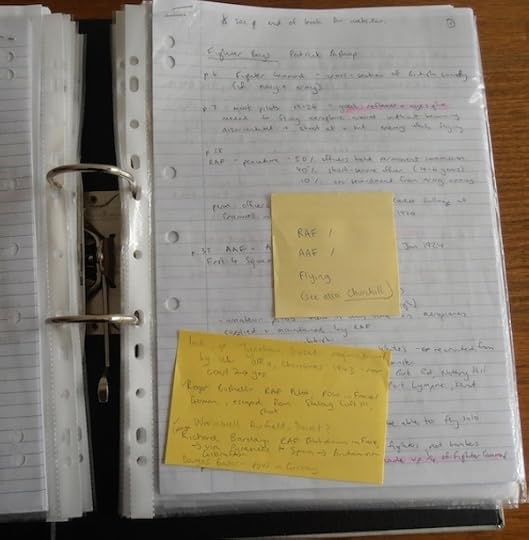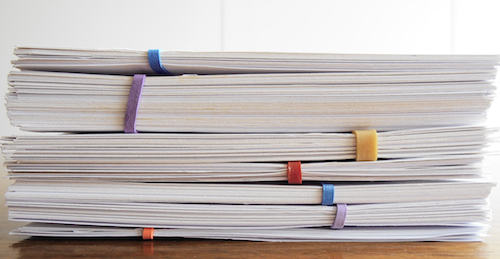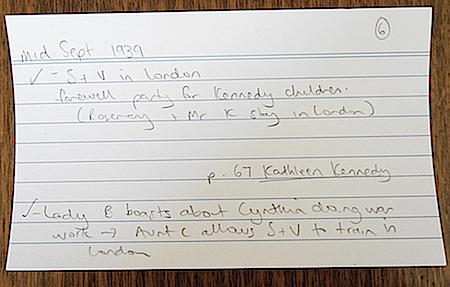How To Write A Historical Novel In Seven Easy Steps – Step Three
First published on the Centre for Youth Literature website, Inside A Dog, in 2012.
3. Get Organised
As I researched, I took notes and I filed all my bits of paper in a big folder:

How did writers function before Post-It notes were invented? I used Post-Its as bookmarks, to label sections of my notes and to jot down bits of information that might come in handy later. As I was reading, I was constantly on the lookout for interesting trivia, funny anecdotes, outrageous people – anything that I could fit into my own story.
After about six months, my notes had outgrown my folder and my brain was about to explode with all my ideas, which meant it was time to move onto my index cards:

For The FitzOsbornes at War, I ended up with about two hundred palm-sized cards, each one containing notes about an important event of the war and/or a significant event for one of my characters. Each card also had a date at the top, and a number that showed where the card fitted into the storyline, as well as page references for my sources of information. For example, here’s card number 6:

If you can’t read my writing (and I don’t blame you if you can’t – even I have trouble reading it sometimes), it says, “mid Sept 1939 – S + V in London, farewell party for Kennedy children (Rosemary + Mr K stay in London) p. 67 Kathleen Kennedy – Lady B boasts about Cynthia doing war work –> Aunt C allows S + V to train in London”.
This tells me that in an early chapter, I need to move my two main characters, Sophie and Veronica, to London, re-introduce my readers to the Kennedy family and explain why Kathleen Kennedy leaves England. I also need to explain why their strict guardian, Aunt Charlotte, allows Sophie and Veronica to stay in London by themselves. And if I need to check any facts about this, I should look on page 67 of Kathleen Kennedy’s biography.
Organising all two hundred cards into some sort of logical order gave me a big, big headache, but when it was done, I could finally start writing. Yay!
Next: The actual writing bit



